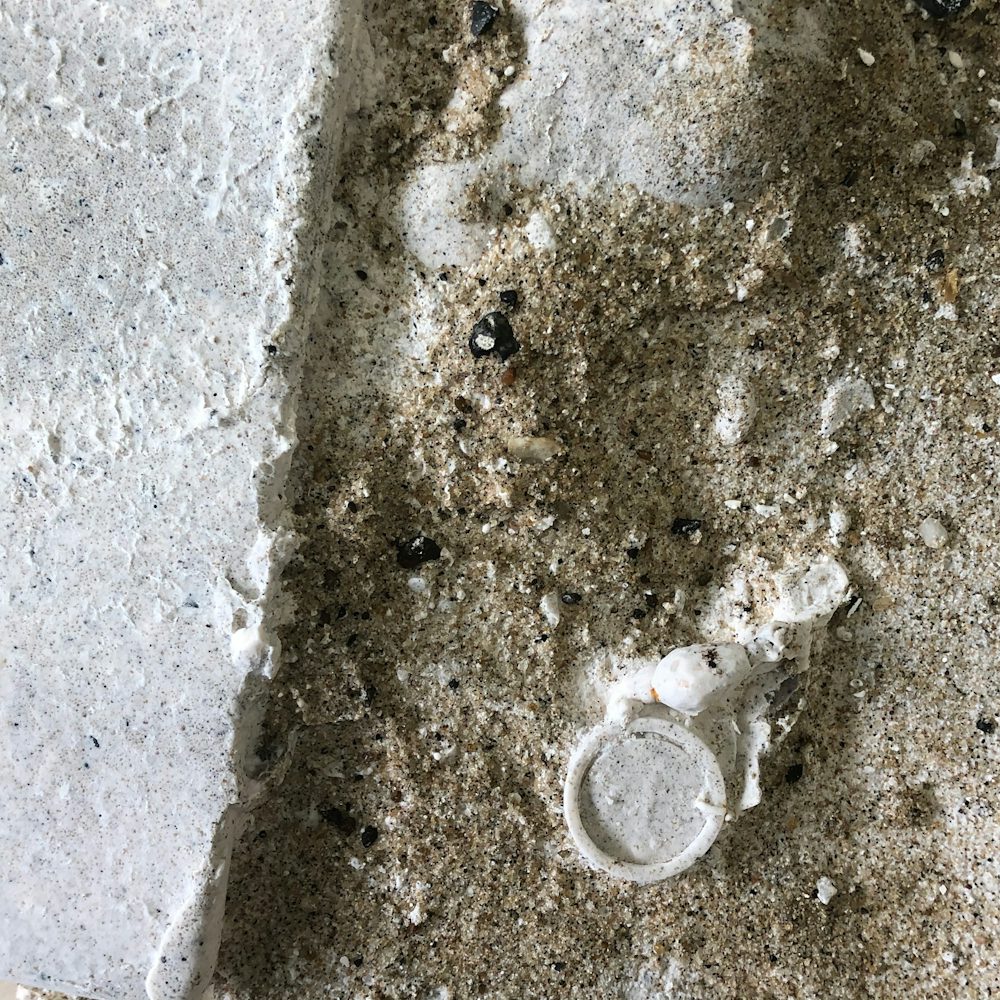The aim of this project is to show how the inevitable and potentially unforeseeable consequences of resource extraction and dislocation can emerge from a place or a casual object.
Through the whole process I have worked with the notion of non-locality which, as Timothy Morton expressed in Hyperobjects, refers to those “objects (that) have blurred boundaries at scales considerably larger than we use to think”.1 Examples include the atomic blast in Hiroshima, the ink of biro pens or even the silicon used to produce the components of technological devices.
Since the beginning of my analysis I have explored how a water body could mediate and convey stories (or what I here call confidences) coming from different spaces and times through sedimentary processes, tides, human and non-human interventions. The object is a plaster cast which was obtained during a site visit along the Thames River banks a few weeks ago, which is why it’s still possible to see traces of river sediment trapped in the material.
The most distinguishable feature of this cast is the shape of an iPhone 6 found in the mud, which I chose not to remove or take out. The principle medium which mediates between us and the water body here in London is simply this small tile of gesso.
By not taking out the device from the river bank I am choosing not to remove a multitude of materials extracted in over 15 countries including China, Indonesia, Peru, Bolivia, Malaysia, etc. (Philippines, Thailand, Brazil, Japan, United States, Kazakhstan, Russia, Vietnam, Austria, Republic of Korea, Germany, South Africa, Sweden, Italy, Switzerland, Mexico and India.)
An iphone 6 is composed of precisely: 31g of Aluminium 20g of Carbon 18.7g of Oxygen 18.6g of Iron 8.1g of Silicon 7.8g of copper 6.6g of cobalt 5.5g of hydrogen 4.9g of chrome 2.7g of nickel
If we look at the possibility that the aforementioned device still contains data which belong to its user, like apps, music and photos and also an extended connection to Cloud storage, it becomes evident that resource extraction and consumption does not end with the physical device but it lingers after the “clinical” death of its body.
In the fiscal year 2013, Apple data centres for the first time consumed more energy than each of the two other major elements of the company’s operations: corporate offices and retail stores. The following year, data centres outstripped retail in terms of water consumption also.2
After the phone became part of the river’s ecosystem, its data are remains stored somewhere in Europe, or more precisely in Denmark at one of the two apple data storages of Viborg or Aabernaa Kassø.
In conclusion, it is clear enough that any attempts to define boundaries or draw a line in the vast ecosystem of agents taking part into extraction, production and displacement processes becomes almost impossible, particularly when what intercedes in these processes is not always a human agency.
Timothy Morton, Hyperobjects – Philosophy and ecology after the end of the world (Minneapolis, MN: University of Minnesota Press, 2013), 40 ↩
Yevgeniy Sverdlik, How Much Water Do Apple Data Centers Use?, Data Center Knowledge.com (June 15, 2016), available here ↩



